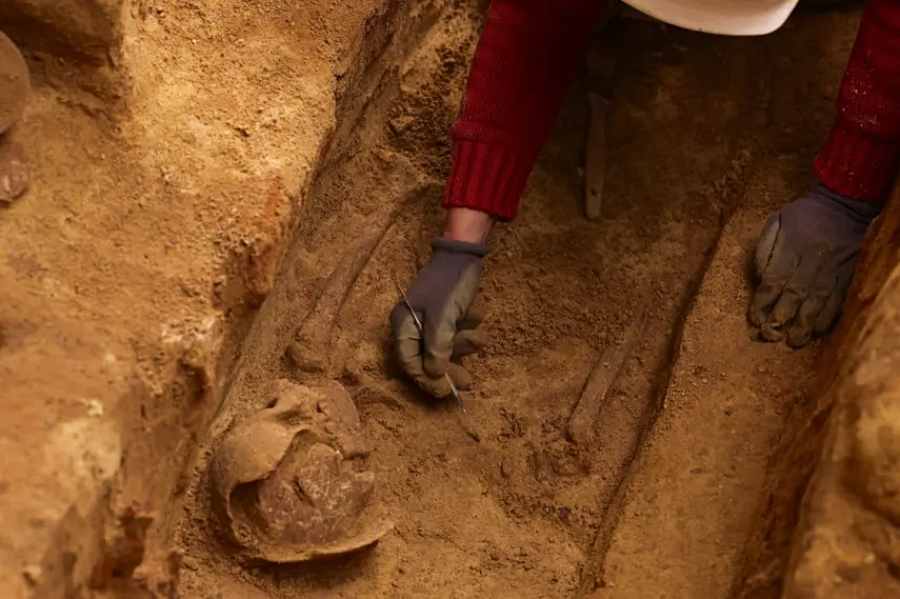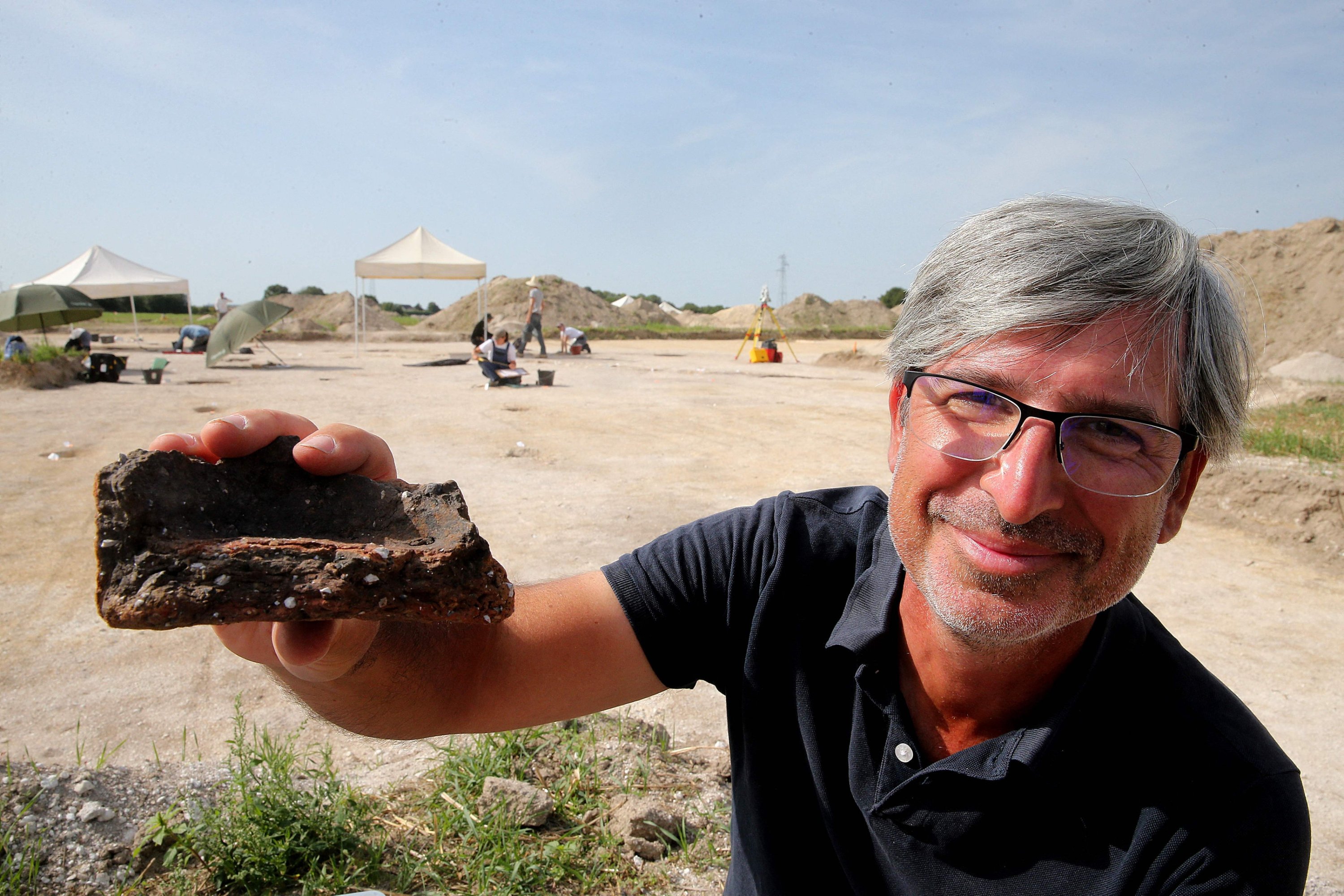Illustration photo by Thomas SAMSON / AFP
Sat 02 September 2023:
Archaeologists excavating a large Neolithic site in northeast France have discovered what they believe to be the final piece of the puzzle: signs of a permanent settlement, AFP reported.
The settlement was discovered at the huge Neolithic site of Marais de Saint-Gond, providing rare insights into its social organization 150 years after the discovery of the first flints.
On 450 hectares in Marais de Saint-Gond, northern France, 15 major flint mines and 135 hypogeum-constructed underground chambers have already been identified.
Since the discovery of flints a century and a half ago, five megalithic-covered lanes, ten axe polishers, and fields cultivated by controlled burns have also been uncovered.
This new discovery makes it possible to pass a milestone in the understanding of “the economic, societal and territorial organisation of the Neolithic”, Martineau said, adding that there is “no equivalent” in all of Europe.

The village was discovered when a ditch for the installation of a palisade was identified in the commune Val-des-Marais around 136 kilometres (84 miles) from Paris.
The prehistoric enclosure was circling a hill, enclosing an estimated area of one hectare (2.5 acres), according to the archaeological evaluations.
They also discovered a tiny oval object made of mother-of-pearl, which Martineau describes as a true “museum piece.”
Remi Martineau, researcher at the CNRS, holds up a fragment of pottery dating from the Modern Neolithic, around 3500-years-ago, from a settlement suggesting the presence of a village occupied by a structured population, at Val-des-Marais, France, Aug. 23, 2023. (AFP Photo)
It has two holes in the center and is thought to be an ancestor of the button, which goes back 3,400 to 3,300 years.
Researchers expect that the rest of the site will be similarly well-preserved if more excavations are done in the future.
The Neolithic period, also known as the New Stone Age, was the final stretch of the Stone Age in Europe and saw the beginnings of agriculture. Hunter-gatherers transitioned to living in villages and a more structured way of life became the norm with new societies emerging that had temples, priests and powerful leaders.






